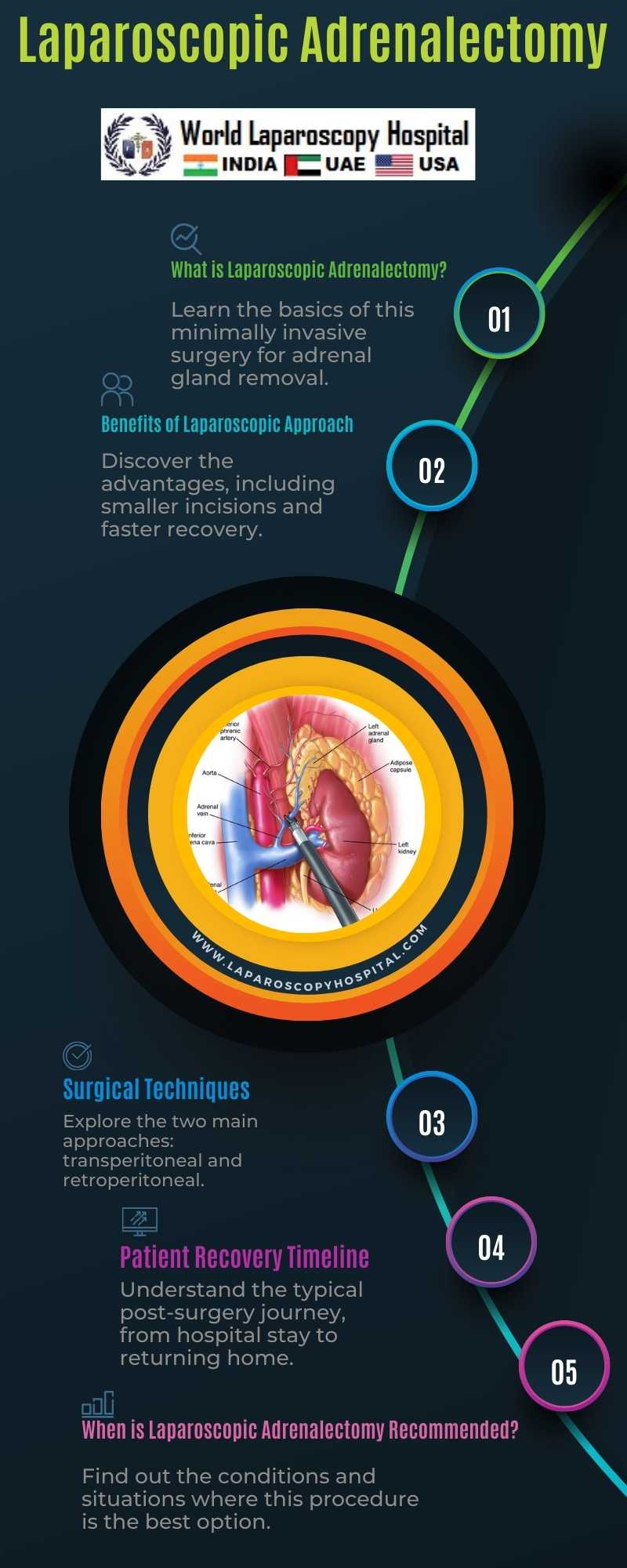Introduction
The field of surgery has witnessed remarkable advancements over the years, and one such breakthrough is Laparoscopic Adrenalectomy. Adrenal surgery, traditionally performed through open procedures, has evolved dramatically with the advent of minimally invasive techniques. Laparoscopic Adrenalectomy, also known as laparoscopic adrenal gland removal, has revolutionized the approach to adrenal tumors and conditions. This article delves into the world of Laparoscopic Adrenalectomy, exploring its history, techniques, benefits, challenges, and the promising future it holds in the realm of adrenal surgery.

I. Historical Perspective
Before we delve into the future of Laparoscopic Adrenalectomy, it's essential to understand its roots in surgical history. Adrenalectomy, the removal of one or both adrenal glands, was initially performed via open surgical procedures, often involving large incisions and prolonged recovery periods. The advent of laparoscopy in the late 20th century opened new possibilities for minimally invasive adrenal surgery.
In the 1990s, laparoscopic techniques were introduced to adrenal surgery, marking a significant turning point. Surgeons began to explore the feasibility of using small incisions and specialized instruments to access and remove adrenal tumors. This innovation laid the foundation for what we now know as Laparoscopic Adrenalectomy.
II. Laparoscopic Adrenalectomy Techniques
A. Transperitoneal Approach
The transperitoneal approach is the most common technique used in Laparoscopic Adrenalectomy. It involves making small incisions in the abdominal wall and inflating the abdomen with carbon dioxide gas to create a working space. This approach provides excellent visualization of the adrenal gland and surrounding structures.
B. Retroperitoneal Approach
The retroperitoneal approach is an alternative method for Laparoscopic Adrenalectomy. It involves accessing the adrenal gland from the patient's back, through the retroperitoneal space. This approach is preferred in some cases, such as when the tumor is small and located in a specific part of the adrenal gland.
III. Benefits of Laparoscopic Adrenalectomy
A. Minimally Invasive
One of the primary advantages of Laparoscopic Adrenalectomy is its minimally invasive nature. The use of small incisions and specialized instruments results in less tissue trauma, reduced postoperative pain, and shorter hospital stays. Patients often experience a quicker recovery and return to their normal activities sooner than with open surgery.
B. Improved Cosmetic Outcome
The cosmetic outcome of Laparoscopic Adrenalectomy is superior to that of open surgery. Small incisions leave minimal scarring, which can be especially important for patients concerned about their appearance.
C. Reduced Blood Loss
Laparoscopic techniques are associated with reduced intraoperative blood loss compared to open surgery. This can be critical for patients with underlying medical conditions or those at risk of bleeding complications.
D. Shorter Hospital Stay
Patients undergoing Laparoscopic Adrenalectomy typically spend less time in the hospital, further contributing to their overall comfort and satisfaction with the procedure.
IV. Challenges and Considerations
While Laparoscopic Adrenalectomy offers numerous advantages, it is not without challenges. Surgeons must carefully consider factors such as tumor size, location, and patient anatomy when determining the suitability of this approach. In some cases, open surgery may still be the preferred option.
V. The Future of Laparoscopic Adrenalectomy
A. Robotics and Automation
The future of Laparoscopic Adrenalectomy holds promising advancements in robotics and automation. Robotic-assisted surgery systems, such as the da Vinci Surgical System, are increasingly being used in adrenal surgery. These systems provide surgeons with enhanced precision and dexterity, allowing for more complex procedures to be performed laparoscopically.
B. Improved Imaging
Advances in imaging technology, such as intraoperative 3D imaging and augmented reality, will further enhance the surgeon's ability to visualize and navigate the adrenal gland during Laparoscopic Adrenalectomy.
C. Personalized Medicine
As our understanding of adrenal tumors and conditions continues to grow, personalized treatment approaches will become more prevalent. Laparoscopic Adrenalectomy will be tailored to each patient's specific needs, ensuring the best possible outcomes.
D. Training and Education
The future of Laparoscopic Adrenalectomy will also see an emphasis on training and education. Surgeons will undergo specialized training in minimally invasive techniques to ensure the safe and effective use of Laparoscopic Adrenalectomy in a wide range of cases.
Conclusion:
Laparoscopic Adrenalectomy has emerged as a transformative approach to adrenal surgery, offering patients less invasive procedures, faster recovery times, and improved cosmetic outcomes. As technology and surgical techniques continue to advance, the future of Laparoscopic Adrenalectomy looks promising, with the potential for even greater precision, automation, and personalized treatment options. Surgeons in Gurugram and around the world are poised to embrace this future, further enhancing patient care and outcomes in adrenal surgery.